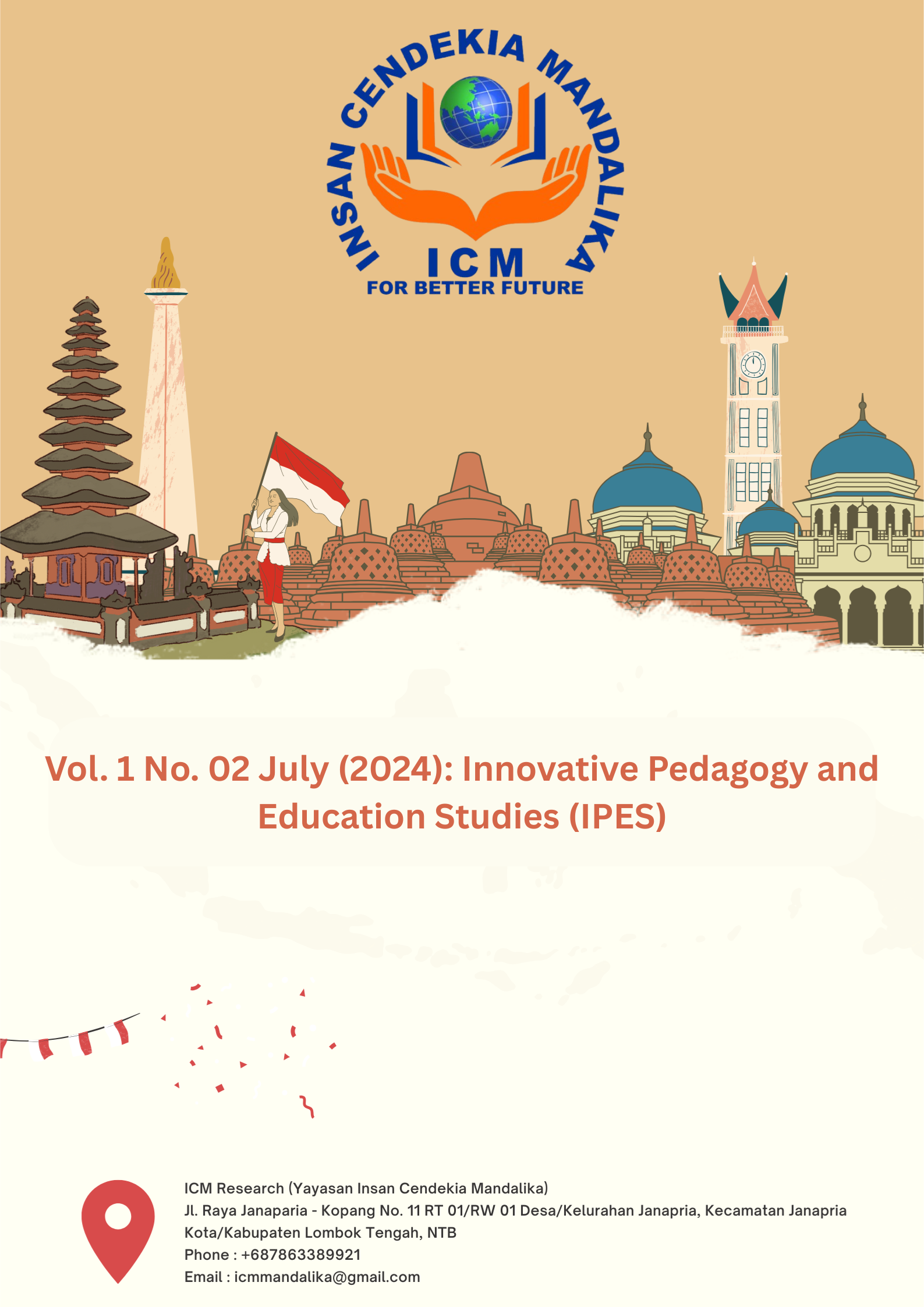THE QIROATI METHOD: AN EFFECTIVE APPROACH TO STRENGTHEN QUR'ANIC LITERACY IN ISLAMIC ELEMENTARY
Keywords:
Qiroati Method, Qur'anic Literacy, Tajweed, Makhraj, Islamic Education.Abstract
In the modern era, the challenge of reading the Qur'an fluently and accurately according to tajweed and makhraj rules remains significant across various age groups. Many individuals struggle with proper pronunciation of hijaiyah letters due to limited access to quality Qur'anic education, ineffective learning methods, and a lack of awareness of the importance of correct tajweed application. The Qiroati method offers a systematic and structured approach to teaching Qur'anic recitation by emphasizing proper letter articulation and gradual tajweed implementation. This study employs a qualitative descriptive method to analyze the application of the Qiroati method at MI Sabilul Mustafa, using interviews, observations, and documentation. The findings reveal that this method significantly improves Qur'anic reading skills through structured teaching, strict evaluation, and hands-on practice, allowing students to learn at their own pace effectively. This study is limited to one institution, making broader generalization difficult. It also focuses solely on reading proficiency without assessing comprehension of Qur'anic content. Future research should explore the method's impact on comprehension, expand the study to multiple institutions, and examine the integration of digital tools to enhance learning outcomes.
References
Farida, Eneng, Hana Lestari, dan Zulfikar Ismail. “Metode Qiroati Dalam Pembelajaran Al-Qur’an: Studi Kasus Di SDIT Insantama Leuwiliang.” Reslaj : Religion Education Social Laa Roiba Journal 3, no. 1 (29 Januari 2021): 1–13. https://doi.org/10.47467/reslaj.v3i1.224.
Faturohman, Oman, dan Umi Kultsum. “PENERAPAN DAN EFEKTIVITAS METODE QIRO’ATI DALAM MENGOPTIMALKAN KEMAMPUAN BACA ALQURÂN (Studi Di SMP Islam Terpadu AL-Masykar Bina Insani Waringinkurung).” PROCEEDING IAIN Batusangkar 1, no. 1 (23 Februari 2021): 273–86. http://ecampus.iainbatusangkar.ac.id/ojs/index.php/proceedings/article/view/2927.
Hasan, Sholeh, dan Tri Wahyuni. “Kontribusi Penerapan Metode Qiroati Dalam Pembelajaran Membaca Al-Qur’an Secara Tartil.” Al-I’tibar : Jurnal Pendidikan Islam 5, no. 1 (1 Februari 2018): 45–54. https://doi.org/10.30599/jpia.v5i1.317.
Muhammad, Defy Habibi. “UPAYA PENINGKATAN BACA TULIS AL-QURAN MELALUI METODE QIROATI.” JIE (Journal of Islamic Education) 3, no. 2 (15 Januari 2019): 142–62. https://doi.org/10.29062/jie.v3i2.97.
Mumung, Asep. “KEUNGGULAN METODE QIRO’ATI UNTUK MENINGKATKAN MEMBACA AL-QUR’AN PADA ANAK USIA DINI.” al-Urwatul Wutsqo : Jurnal Ilmu Keislaman dan Pendidikan 1, no. 1 (30 April 2020): 1–4. https://ejournal.stit-alhidayah.ac.id/index.php/jurnalalurwatulwutsqo/article/view/5.
Muspiroh, Novianti. “Manajemen Pendidikan Agama Islam: Studi Pembelajaran Membaca al-Qur’an dengan Metode Qiroati di Sekolah Dasar Islam Terpadu Sabilul Huda.” Al-Tarbawi Al-Haditsah: Jurnal Pendidikan Islam 5, no. 2 (17 Desember 2020). https://doi.org/10.24235/tarbawi.v5i2.6820.
Ruswandi, Agus. “METODE QIROATI SEBAGAI MODEL PEMBELAJARAN MEMBACA AL QUR`AN UNTUK TINGKAT SEKOLAH DASAR (PENELITIAN PADA SD IT AL ICHWAN CIKARANG UTARA BEKASI).” Penamas 32, no. 1 (30 Juni 2019): 671–86. https://doi.org/10.31330/penamas.v32i1.287.
Santi, Komputri Apria. “PENERAPAN METODE QIRO’ATI DALAM MENINGKATKAN KEFASIHAN MEMBACA AL-QUR’AN SISWA KELAS VI MADRASAH IBTIDAIYAH PONDOK PESANTREN RAUDHATUL ULUM SAKATIGA KECAMATAN INDRALAYA KABUPATEN OGAN ILIR.” Raudhah









